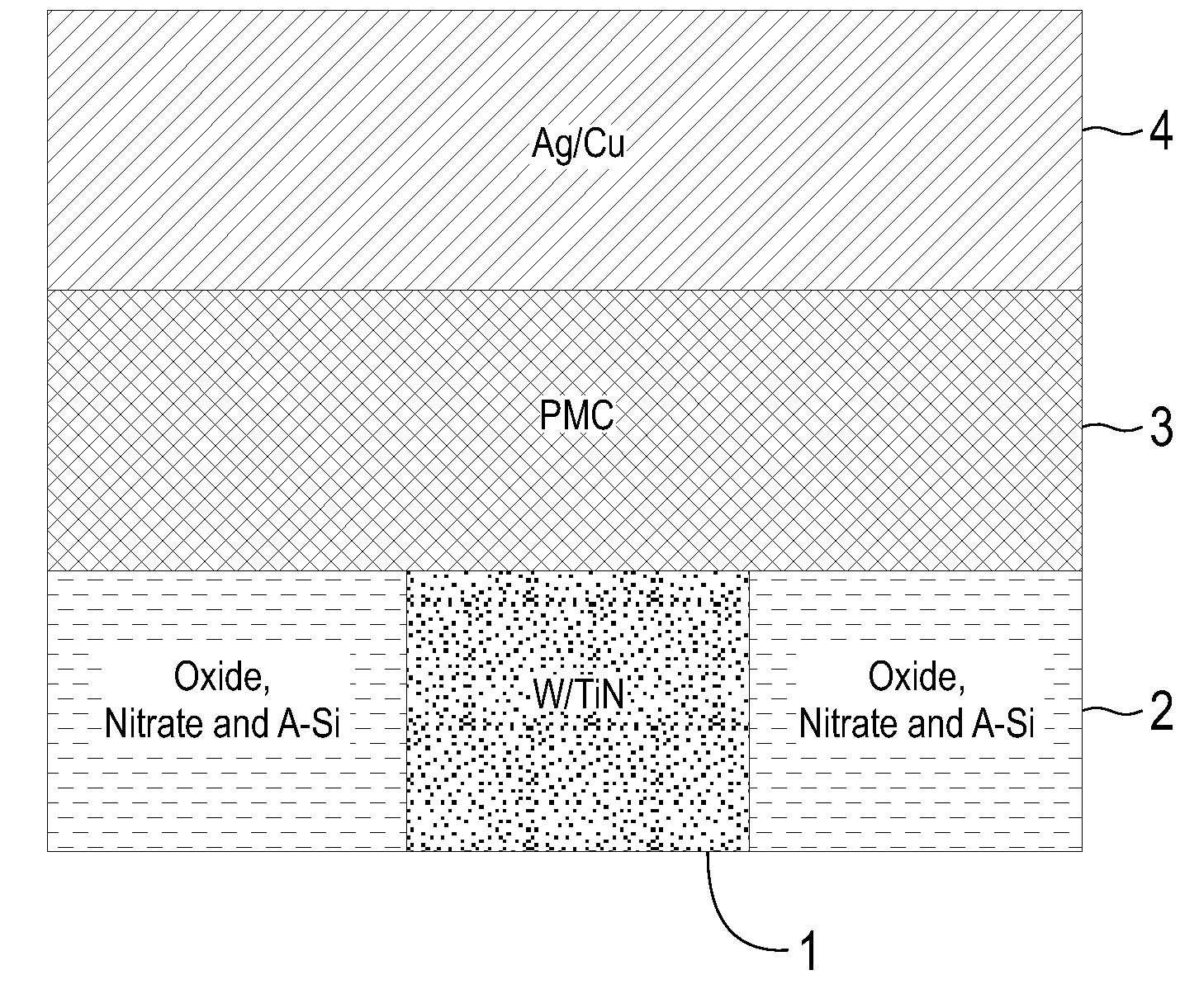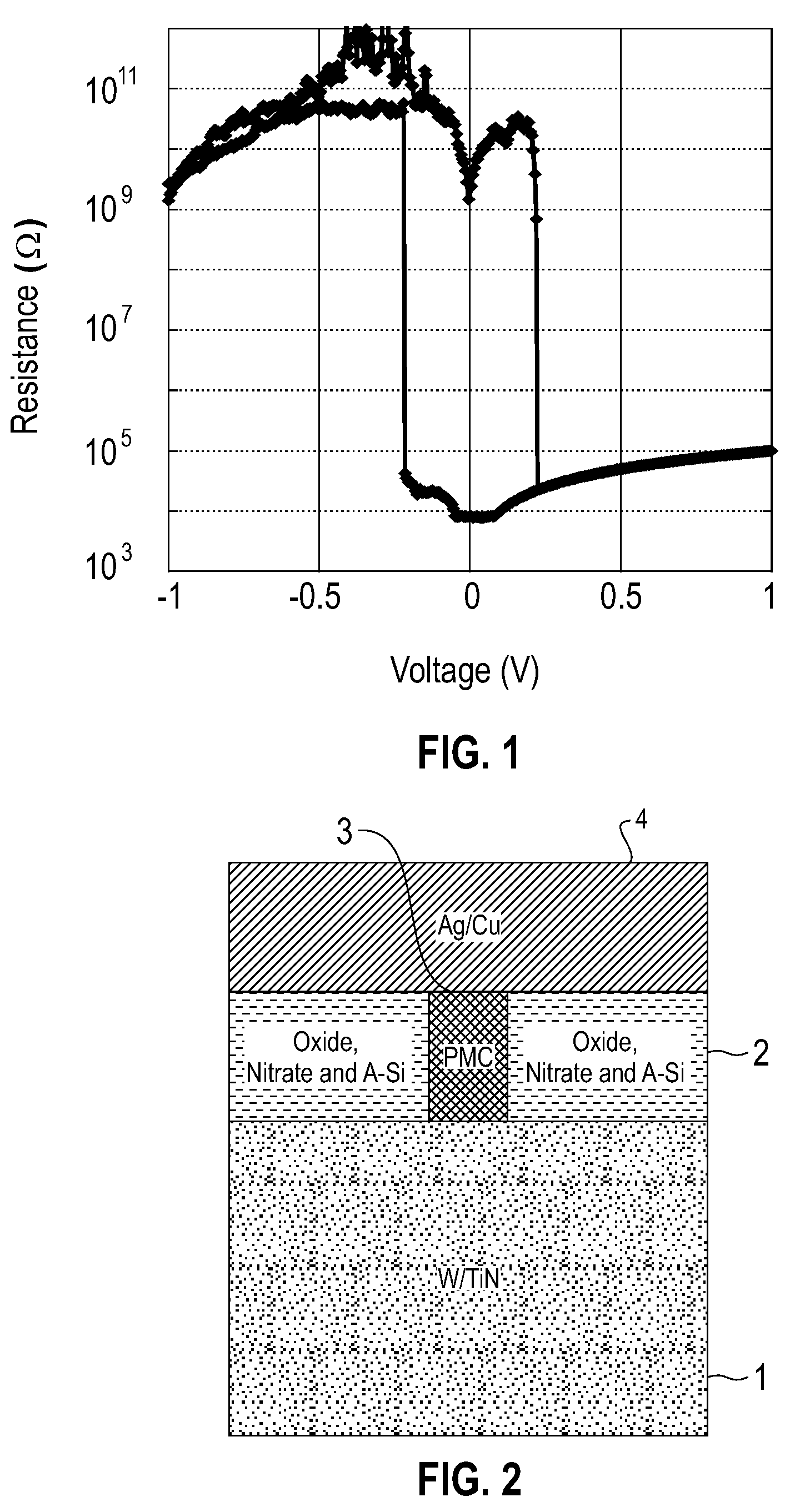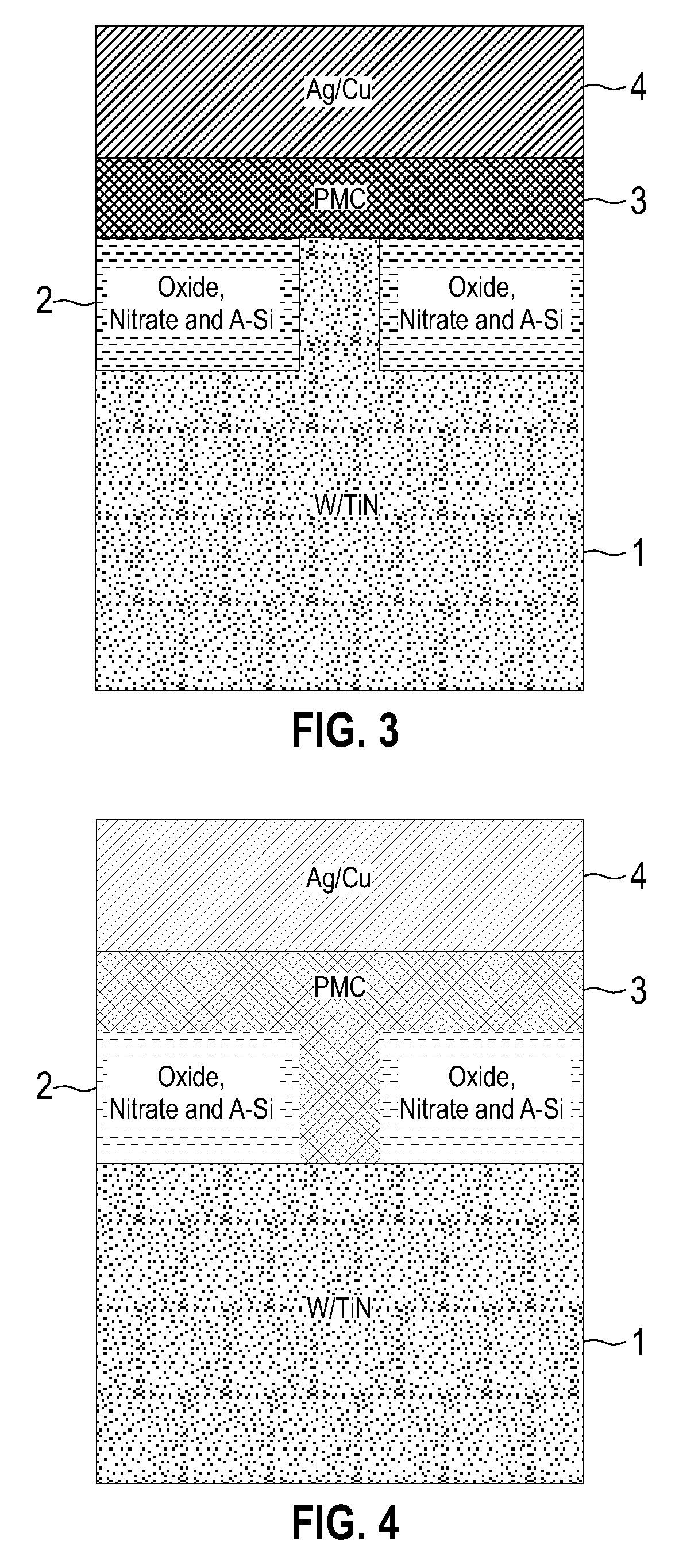Electrolytic device based on a solution-processed electrolyte
a technology of electrolyte and electrolysis device, which is applied in the direction of liquid/solution decomposition chemical coating, separation process, coating, etc., can solve the problems of low resistance state, high resistance, and relatively expensive and time-consuming techniques
- Summary
- Abstract
- Description
- Claims
- Application Information
AI Technical Summary
Benefits of technology
Problems solved by technology
Method used
Image
Examples
example 1
GeS2 on Si / SiO2
[0081]A film of the GeS2 precursor is readily deposited on a clean thermally-oxidized silicon substrate using a spin-coating technique and the solution described above. Each substrate is pre-cleaned by first using a soap scrub, followed by sequential sonication in ethanol and dichloromethane, and finally using a Piranha clean (hydrogen peroxide: sulfuric acid) with a deionized (DI) water rinse. Thin films of the GeS2 precursor are formed by depositing 2-3 drops of the above-mentioned GeS2 solution onto the substrate, allowing the solution to spread on the substrate for about 10 sec and spinning the substrate at 2000 rpm for about 2 min in a nitrogen-filled drybox.[0082]The resulting precursor films are dried on a hot plate at 100° C. for about 5 minutes in an inert atmosphere, followed by a decomposition heat treatment at 250° C. for about 10 minutes on the same hot plate (gradual heating to this temperature over ½ hr). The latter decomposition heat treatment yields ...
example 2
GeS2 on Ag-Coated Si / SiO2 w / Device Results
[0092]A solution of GeS2 is created by dissolving 0.055 g of GeS2 (0.4 mmol) in 1.6 mL of anhydrous hydrazine (same concentration as in Example 1). The solution is stored about 4 weeks before use for this example. The reaction and resulting solution are maintained in an inert atmosphere (e.g., nitrogen or argon). The solution is filtered through a 0.2 μm syringe filter, while being dispensed onto a substrate for the spin coating process.[0093]A film of the GeS2 precursor is readily deposited onto an Ag-coated (about 200 nm; deposited by e-beam evaporation) p+ silicon substrate using a spin-coating technique and the solution described above. Each Ag-coated substrate is cleaned in an ammonium hydroxide / water mixture for approximately 10 min, rinsed with DI water and blown dry with compressed air before spin coating. Thin films of GeS2 precursor are formed by depositing 2-3 drops of the above-mentioned GeS2 solution onto the substrate, allowing...
example 3
GeS2 Doped with Cu on Si / SiO2
[0098]A solution of GeS2 is created by dissolving 0.055 g of GeS2 (0.4 mmol) in 1.6 mL of the same anhydrous hydrazine as used in Example 2. The solution is stored 24 hr before use. A solution of Cu2S is prepared by stirring 0.159 g of Cu2S (1 mmol) and 0.064 g of S (2 mmol) in 5 mL of anhydrous hydrazine for a period of approximately two weeks. The resulting yellow solution still had a small quantity of black specks, which were removed by filtration through a 0.2 μm syringe filter during dispensing of the solution. The composite solution for spin coating was prepared by stirring (for two minutes) 0.4 mL of the GeS2 solution (containing 0.1 mmol GeS2) with 0.25 mL of the filtered Cu2S solution (containing 0.05 mmol Cu2S). All processing is performed in a nitrogen-filled glove box with oxygen and water levels below 1 ppm.[0099]Each substrate for spin coating was pre-cleaned by first using a soap scrub, followed by sequential sonication in ethanol and dic...
PUM
| Property | Measurement | Unit |
|---|---|---|
| Temperature | aaaaa | aaaaa |
| Temperature | aaaaa | aaaaa |
| Temperature | aaaaa | aaaaa |
Abstract
Description
Claims
Application Information
 Login to View More
Login to View More - R&D
- Intellectual Property
- Life Sciences
- Materials
- Tech Scout
- Unparalleled Data Quality
- Higher Quality Content
- 60% Fewer Hallucinations
Browse by: Latest US Patents, China's latest patents, Technical Efficacy Thesaurus, Application Domain, Technology Topic, Popular Technical Reports.
© 2025 PatSnap. All rights reserved.Legal|Privacy policy|Modern Slavery Act Transparency Statement|Sitemap|About US| Contact US: help@patsnap.com



